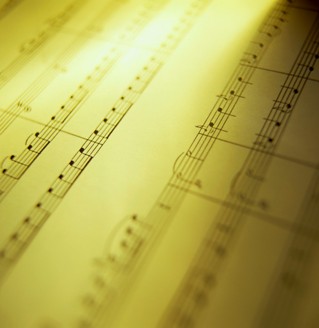The Reproduction of Literary, Artistic and Musical Works
 In addition to the regulations governing the reasonable use of copyright protected works, the regulations governing the reproduction of such works must also be noted carefully.
In addition to the regulations governing the reasonable use of copyright protected works, the regulations governing the reproduction of such works must also be noted carefully.
Under certain circumstances and subject to certain conditions, it is possible for lecturers, students and librarians to make copies of copyright protected works. Within these limits, specific permission from the holder of copyright is not required.
Students and Researchers
A student/researcher may make a single copy for the purposes of research or private study provided that:
- the use is reasonable. Copying the whole work or a very large portion of the work is regarded as unreasonable.
- the copy is made by the student or researcer him/herself or by a librarian in his/her stead. No on else may make these copies
- he/she does not disseminate the copy or make the copy available to anyone else.
Librarians
Librarians may copy an article from a journal or anthology or a reasonable portion from any other work and may make a single copy available upon request to:
- an individual for the exclusive purposes of private study or the use of the individual who has requested the work;
- a lecturer for research, teaching or the preparation for teaching a class;
- copy a work to replace an edition/copy which has been damaged or lost and for which an unused replacement cannot be acquired at a reasonable price;
- copy an unpublished work exclusively for preservation and security purposes;
- copy, upon request, the whole or a substantial portion of a copyright protected work from the library's collection for private study or personal use, on condition that an unused edition cannot be acquired at a reasonable price.
A library is not permitted to compile a collection of articles or extracts from works in facsimile form, to place such copies on the Short Loanshelf and allow students to duplicate such reproductions. In such cases it is possible for the royalties payable to be set according to the number of students that are registered for the course concerned.
Lecturers
A lecturer may do the following, subject to certain reproduction limitations (see heading entitled reduction limitations):
- make a single copy of a reasonable portion of a work for him/herself or request that the library makes such a copy for him/her for the purposes of research, preparation for teaching or class teaching. Although the regulations are not very clear in this regard, the act is generally interpreted as including sketches, photographs or illustrations from textbooks or journals for illustrative purposes in the classroom.
- make multiple copies of a reasonable portion of a work for him/herself for classroom use, on condition that:
only one copy per student per course is made by or for the lecturer and is used exclusively in the classroom or for class discussions. This includes comprehension exercises and poetry analysis
IT IS IMPORTANT to note that the Regulations state very clearly that the right to reproduce works applies only to literary works and that the Regulations exclude musical and artistic works. If a music teacher or leader of a choir wishes to make copies of a musical work, he/she must always obtain permission from the composer or his/her publisher. This provision also applies to artistic works, e.g. photographs, pictures, graphic works or diagrams which are published as illustrations or appendices. Furthermore, the above authorisations to lecturers are subject to the following:
Reproduction Limitations
The reproduction of the above works is limited to:
- the reproduction of no more that one short poem, article, short story or essay or two extracts by the same author;
OR
alternatively, the reproduction of no more than three short poems, articles, short stories or essays from the same anthology or collection of journals;
- the reproduction must be made only for the purposes of teaching a specific class during a specific quarter;
- the reproduction may not clash with the normal use of the work to the extent of constituting any unreasonable prejudice to the legal interests and vested rights of the author or holder of copyright;
- copies may not be used to create, replace or substitute anthologies, compilations or collections;
- no copies may be reproduced from works which are intended to be ephemeral in nature (i.e. designed to be relevant only for a short time)
- copies may not replace books, reprint editions or journals, and the same lecturer may not repeat copying of the same material during the same quarter.